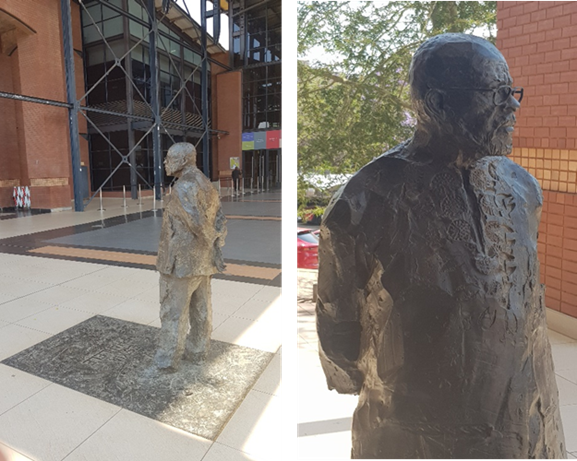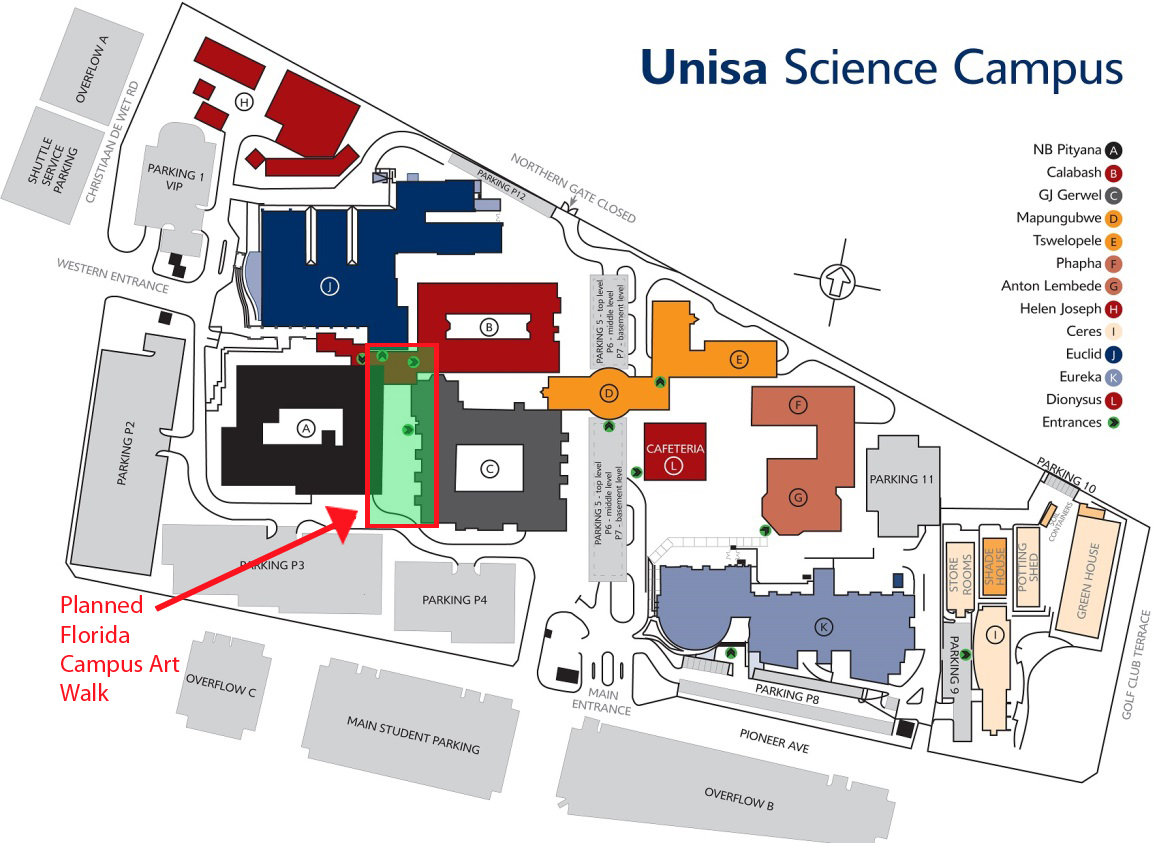Science Art Walk
About
UNISA FLORIDA SCIENCE CAMPUS

The project targets UNISA students, alumni and the broader South African Art Sector to participate in the this exciting journey of introducing public Art (preferably from recycled item) to a Science inspired environment. well established artists will be encouraged to partner with young and upcomming developing artists in pursuit of skills development and sustainability. More info and submissions:
artwalkinfo@unisa.ac.za

Guy Du Toit and E. Tanya, Eskia Mphahlele. Cast bronze, Unisa Sunnyside Campus
The University of South Africa invites interested Unisa student artists, staff and alumni to participate in transforming the Unisa Science Campus in Florida, Johannesburg, with various types of public artworks that embody the sustainability principles of Reduce, Reuse and Recycle.
The inclusion of public outdoor art on university campuses is not new to South African universities and is by no means new to Unisa. The inclusion of permanent public outdoor art enjoys a long tradition of commissioning circumstances as it adds collateral value, monetary value and visual appeal to a campus’s appearance.
Unisa’s Florida Campus is the hub of Unisa’s science, engineering and technology and agriculture and environmental sciences programmes. Unisa has made science a priority and aims to grow research capacity and support research activities in the fields of science, engineering, technology, agriculture and environmental sciences through the colleges located on its Science Campus.
The Unisa Science Campus in Florida, west of Johannesburg, has in less than 10 years been transformed from a campus with rolling lawns and tree-lined walkways to a highly built-up campus with few wind-down and relaxation areas for staff and students alike. The specific area on campus ear-marked for this intervention includes three main buildings: the Calabash, NB Pityana and the GJ Gerwel blocks and leads to the engineering laboratories and workshops.
The latter two buildings were named after political and human rights activists who played an important role in the transformation of South Africa and the higher education sector in particular. The buildings, adjacent to one another and housing academic staff, the library and other professional and support staff, are separated by a walkway.
This walkway is the site identified for this intervention with public sculptures and other refurbishments (such as mosaic work, wall paintings and artistically-designed benches) embodying the sustainability principles of Reduce Reuse Recycle.
It will become a flagship project that has scalability potential to evolve into similar initiatives at other Unisa campuses.
Last modified: 2023/07/29
